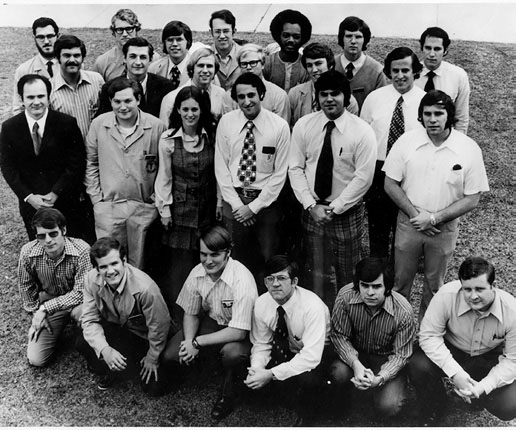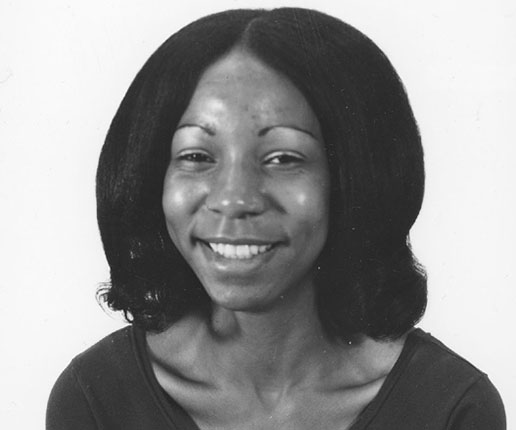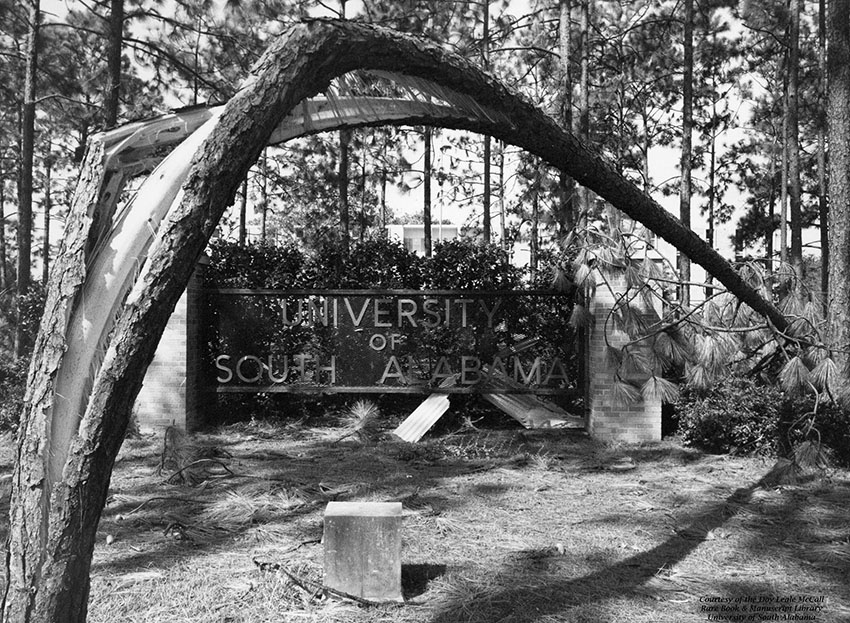60th Anniversary Timeline: 1970s
Posted on December 13, 2023 by USA Marketing and Communications
Of the 5,221 students in 1970, more than 4,000 live at home or elsewhere off campus. With South on the quarter system, classes typically meet Monday through Thursday, and the campus empties Friday through Sunday. South switches to a semester system in 1998 and develops into a university that attracts people from across the state and around the world. Today, 65% of students come from outside Mobile County.
1970
South Gets A Hospital
AS A STEP TOWARD creation of a medical school, the city transfers Mobile General Hospital to South for $10.
National Pan-Hellenic Council Arrives
ALPHA KAPPA ALPHA SORORITY, INC. becomes South’s first historically African American Greek organization in 1970. Other
pioneers are Alpha Phi Alpha Fraternity Inc. and Delta Sigma Theta Sorority Inc. in
1972 and Omega
Psi Phi Fraternity Inc. and Kappa Alpha Psi Fraternity Inc. in 1974.
Turbulent Times
THROUGH THE TUMULTUOUS 1960s and ’70s, such issues as civil rights and the Vietnam War inspire occasional protests. In fall 1970, Black students stage a sit-down after a reduced Student Government Association allocation for Black History Week. Five years later, students elect Ken Simon as the first African American SGA president.
1971
Saenger Saved
One day before the planned demolition of the 1927-vintage Saenger Theatre in downtown Mobile, it’s donated to South. The University uses it for music and theater department performances, among other events. In 1999, the City of Mobile buys it for $500,000.
Sea Studies
Alabama creates the Dauphin Island Sea Lab marine research and education center on Dauphin Island. A consortium of 22 Alabama colleges and universities operates the lab. South has the largest presence of faculty and students, and its president chairs the executive committee.
1972

Goodbye, Mischka
Students vote 625-228 to send live jaguar mascot Mischka to the Rare Feline Breeding Compound in Florida. University trustees accept the recommendation. A brief escape from her outdoor pen near the Jag Gym may have influenced the decision. Not long after she was donated to South in 1968, student Bob Kirsch won a name-the-jaguar contest. He remembers his prize as a then-impressive $100.
1973
IN JANUARY, the College of Medicine’s 25-member charter class starts its studies. Patricia Sanders, a member of the next class, becomes the college’s first female African American graduate in 1977. “I was so young, I didn’t fully understand the magnitude of what was taking place,” she recalls years later. “I was just focused on becoming a physician.”


1974
SOUTH’S ALUMNI ASSOCIATION creates its constitution and bylaws. The following year, it files articles of incorporation. Today, the association has nearly 6,000 members and an on-campus home at the MacQueen Alumni Center.
1976
Founding Member
The University joins five others as charter members of the Sun Belt Conference. To date, South has won the league’s all-sports Vic Bubas Cup a record 16 times.
1978
Research and Clinical Training
South starts its first Ph.D. program, in Basic Medical Sciences. It helps draw research-focused faculty and students to the College of Medicine and boosts the University's research profile.
Ambassadors
The Office of Alumni Affairs creates the Southerners, a group of students who help host events and otherwise act as University ambassadors. Originally 12, today they number 28 and are easily distinguished by their trademark red and blue jackets.
1979

ILL WINDS The fall quarter proceeds on schedule despite $3 million in damage from Hurricane Frederic on Sept. 12. The storm splinters trees on the main campus and severely damages the waterfront Brookley Center, part of a former Air Force base south of downtown Mobile that South acquired in 1969. After six months of repairs, Brookley resumes hosting conferences, continuing education and special programs. In 2010, South sells the property to the USA Foundation for $20 million.


